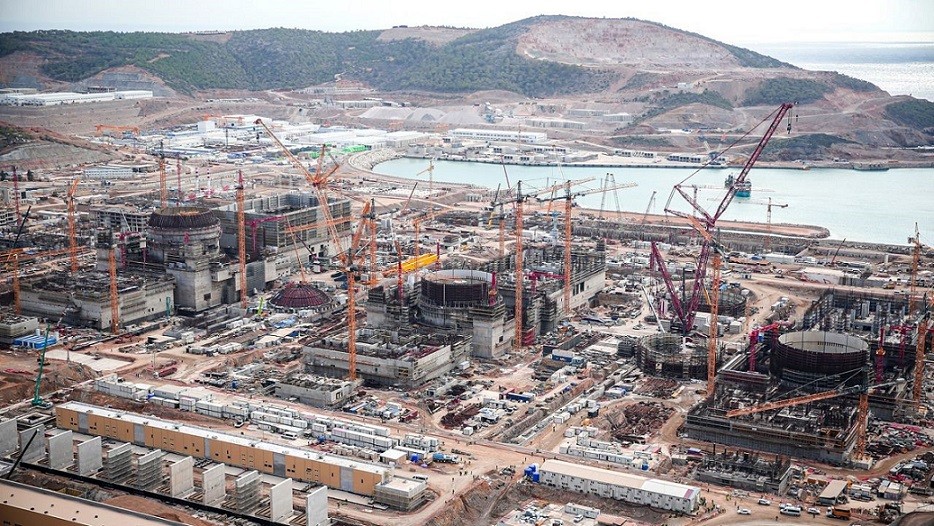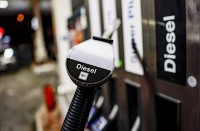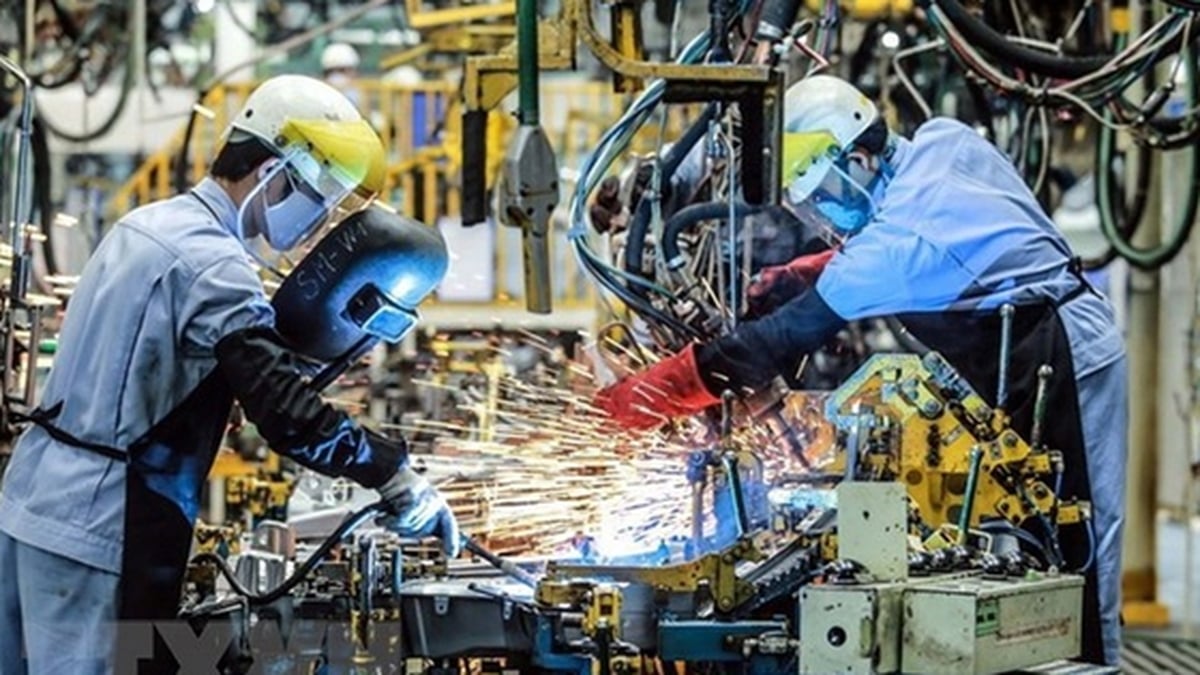 |
A notable exception to the sanctions against Russia, which the US and Europe have not been able to penetrate. In the photo: The Akkuyu nuclear power plant (Türkiye) is under construction in November 2022. This is a new form of investment cooperation by Rosatom - full financing and a commitment to operate throughout the entire life cycle. (Source: Getty Images) |
Rosatom - the "symbol" of the Russian state-owned nuclear energy monopoly, is the market leader in uranium enrichment and export, and is also the most important and experienced partner in the construction and operation of nuclear power plant projects around the world .
Despite tensions with Moscow, Rosatom is protected by its vital role in global nuclear energy and the fact that it is not easily replaced, experts say. Paul Dorfman, chairman of the Nuclear Industry and Consulting Group and a longtime adviser to the British government , said the main reason was “valuable interdependence”.
Rosatom is a major exporter of nuclear fuel. As of 2021, the United States relied on Russia’s nuclear monopoly for 14% of the uranium it supplies to its nuclear reactors. Rosatom also provides fuel enrichment services, accounting for 28% of U.S. needs.
European countries also buy nearly a fifth of their nuclear fuel needs from Rosatom. The EU has made little progress since abandoning Russia’s nuclear industry, Dorfman said.
Russian companies have built many nuclear plants around the world and in some cases have financed their construction. Recently, in the case of the Akkuyu Nuclear Power Plant project (Türkiye), Rosatom implemented a new form of investment cooperation: full financing and a commitment to operate the plant throughout its entire life cycle.
As of the end of 2021, nearly one-fifth of the world’s nuclear power plants were in or built by Russia. Rosatom is currently building 15 more plants outside Russia, according to Columbia University’s Center on Global Energy Policy.
The "advantage" of nuclear energy has made many countries in the world not only find it difficult to give up early, but also strongly continue to pursue nuclear power. And in that, the "intertwined dependence" is not easy to remove. Experts say that finding new suppliers to replace Rosatom in the global nuclear industry will take many years.
According to the World Nuclear Status Report (WNISR), some countries continue to put their faith in nuclear power, or at least see it as a carbon-free energy source to combat climate change. There are still 412 nuclear reactors operating in 41 countries. Nuclear power accounted for about 9.8% of global electricity production in 2021, down from a peak of 17.5% in 1996.
Has America found a clean energy source?
While Germany officially shut down its last three nuclear power plants on April 15, three and a half months behind schedule, the United States still has the world's largest fleet of nuclear power plants - with 92 commercial reactors. According to the US Energy Information Administration, nuclear power will account for 18.2% of the world's No. 1 economy 's electricity production in 2022.
Nuclear power’s share of the US energy mix has also declined over the past decade – from around 20% to just over 18% today. After peaking at around 102,000 MW in 2012, US nuclear power generation fell to 95,492 MW by the end of 2021.
The US also has the oldest nuclear reactors in the world, with an average age of 41.6 years. Most reactors have been operating since 1985. Only two new reactors are currently under construction.
However, President Joe Biden has championed nuclear as a carbon-free energy source to combat climate change, and last year the US administration launched a $6 billion bailout package to “rescue” nuclear power plants at risk of closure.
Europe cannot give up nuclear energy yet
In fact, Russia’s dependence on nuclear power can sometimes outweigh other considerations. Hungary, for example, has been the most vocal opponent of EU sanctions against Rosatom. It is also one of the only EU countries that relies on nuclear power for more than 40% of its electricity, and it has a long-term financing agreement with Rosatom to build nuclear power plants.
Finland currently operates four nuclear reactors, which provide a third of the country's electricity. According to the Finnish Ministry of Economic Affairs, a fifth reactor is in the development phase.
Support for nuclear power has increased in Finland in recent years. A poll conducted by the Finnish Energy trade association last year found that 60 percent of Finns supported nuclear power, a record high. Compared to many other countries in the world, Finland is ahead of the curve when it comes to nuclear waste management. The Nordic country is currently building a deep underground nuclear waste repository that is expected to be operational by 2025.
Meanwhile, France remains the world’s most reliant on nuclear power, with 56 operating power plants providing about two-thirds of the country’s electricity needs. Power plants have an average lifespan of nearly 37 years, with the last reactor coming online in 1999.
Last year, French authorities were forced to shut down several of the country’s reactors after discovering corrosion problems, causing nuclear power output to fall to its lowest level in 30 years. Despite the problems, President Emmanuel Macron’s government wants to return nuclear power output to 350-380 TWh per year in the coming years. The country aims to build six new generation EPR2 reactors at a total cost of 52 billion euros ($57 billion). Despite having the most reactors, France currently has no final repository for highly radioactive waste in France.
Poland is another case, although it had planned to develop nuclear power since 1980 and started building two reactors, the country stopped building these two reactors after the disaster at the Chernobyl nuclear power plant in 1986. After many unsuccessful attempts, it was not until late 2014 that the government approved a plan to build six new reactors, with the first unit expected to be operational in 2024.
Poland hopes nuclear power will help it phase out coal-fired power plants, which currently meet about 70% of Poland's electricity needs.
 | Tax payment extension in 2023: Tax payment extension for VAT, CIT, PIT and land rent On April 14, the Government issued Decree No. 12/2023/ND-CP extending the deadline for payment of value added tax, corporate income tax ... |
 | Russian economy 'better than expected', sanctions backfire, is outlook as 'dim' as predicted? The resilience of the Russian economy has surprised many observers over the past year. Moscow has effectively coped with ... |
 | Coffee price today April 18, 2023: Factors influencing coffee price trends, is the market not facing pressure on supply? Overall, during this period, the monetary factors are the strength of the USD and the market's risk-on sentiment... |
 | Gold price today April 18, 2023: Gold price stuck, sensitive to better-than-expected US economic data, still 'bright' for investment, SJC gold increased slightly Gold price today April 18, 2023, gold price fluctuates, still maintaining the important milestone of 2,000 USD/ounce, not affected by the adjustment of ... |
 | Western efforts to sanction Moscow begin to 'bear fruit', has the Russian oil industry 'taken a hit'? Western efforts to limit the ability of the West to finance the special military operation in Ukraine ... |
Source




















































![[Maritime News] More than 80% of global container shipping capacity is in the hands of MSC and major shipping alliances](https://vphoto.vietnam.vn/thumb/402x226/vietnam/resource/IMAGE/2025/7/16/6b4d586c984b4cbf8c5680352b9eaeb0)













































Comment (0)